Ilhas Desertas N32 31 W 16 30

Gryphon II
Chris and Lorraine Marchant
Wed 23 Sep 2009 22:27
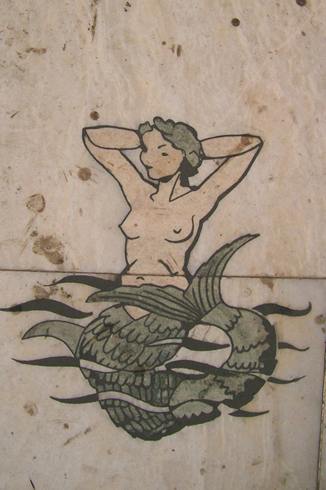
We left Madeira after nearly a fortnight of exploring the
island and decided to go to the Desertas Islands 20 miles to the south east. We
had one abortive attempt when we were caught out by a sudden increase in
wind on rounding a headland and shipping a small amount of seawater through 2
open hatches meant that we had to return to harbour and wash the salt out of all
the saloon cushions....a very hot all day job!
In contrast to most of Madeira these
islands are a huge barren lumps, the largest rising to 450 and 600
metres and looking as if they have just appeared out of a volcano, although they
are in fact 3 million years old. They are now part of
the Madeira National Park and we duly obtained permission to visit them. The
anchorage is tiny with really only room for 2 boats. However it is very
protected from the prevailing northerlies and we had 2 calm nights
there.
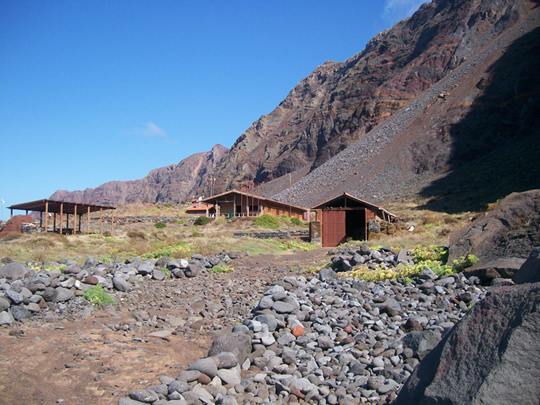
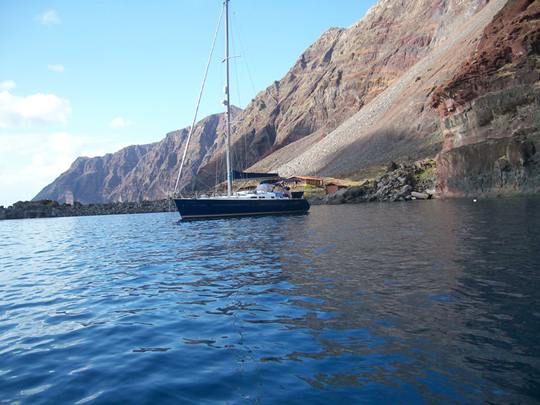 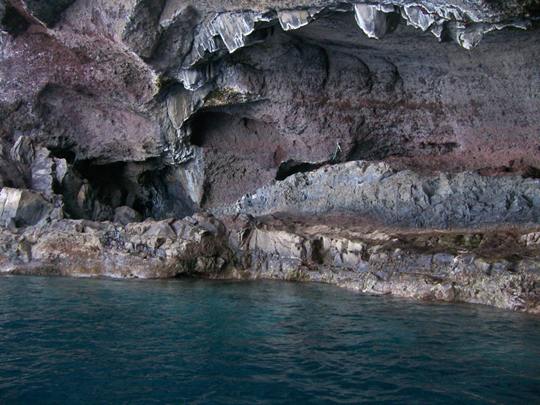 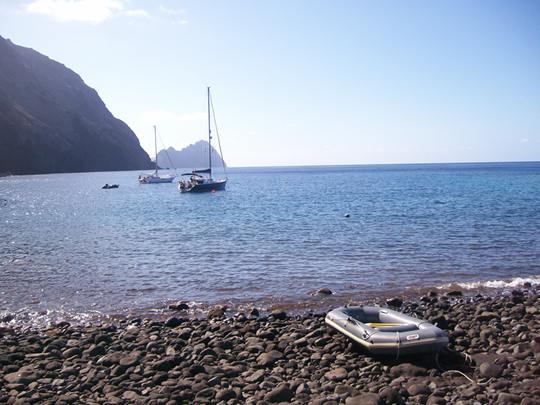 On presenting ourselves to the warden we were offered a
guided tour of the foreshore. We were unable to access the higher parts due to
rock falls that occur all the time. A minor one happened whilst we were there, a
more major one a year or so ago had nearly wiped out the original wardens post
with a boulder the size of a small car.
The main job of the wardens is to protect the indigenous
wildlife, mainly seabirds and the canary but
especially the Monk seals which have a small colony of about 36 in caves at
one end of the island. These animals were almost hunted to extinction but
saved through the creation of the national park when only six individuals were
left. There are still only 3 breeding females and one of these is very old.
They even have a seal hospital there but with no
residents at the time we were there, it us usually used
for pups that are swept away from the mothers in stormy conditions and can
suffer from exposure and shock.
The caves are extensive, the one above goes under the rock
for some 20 metres and access can be gained by dinghy at high tide, however,
having seen the size of the rocks that peel away here we just explored the
entrance and got away from the rock face pretty quickly.
 |